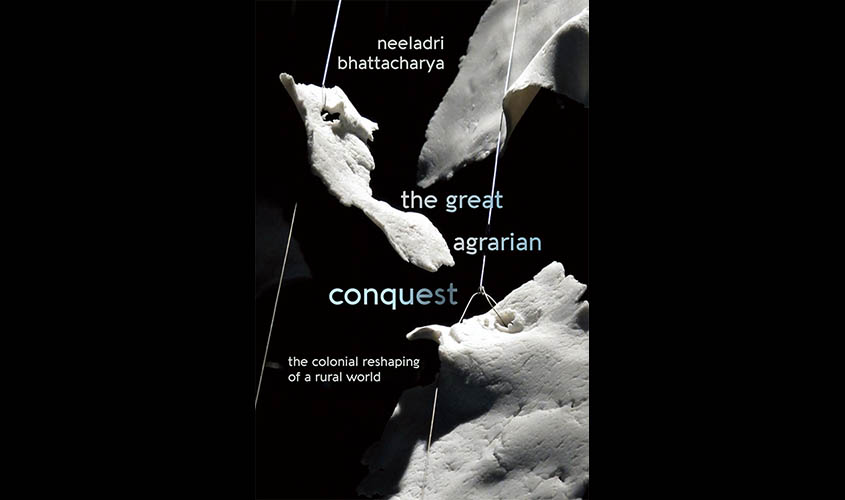At a time when reports of all kinds of deliberate attempts to destroy Jawaharlal Nehru University, one of the leading universities especially of the liberal arts in India, are rife, one of its finest historians, Professor Neeladri Bhattacharya has again reminded us why it is rated so highly in academia. His path-breaking monograph on significant transformations in Punjab under British rule (1849-1947) adds to his legendary reputation of a teacher par excellence in Centre for Historical Studies for over four decades. Much admired for his enthralling lectures on problems of historical writing and method, Professor Bhattacharya would never cease to mesmerise through his grounding in both grand theories, as well as empirical details, the touchstone of the historian’s craft.
In the book, as in his lectures, Professor Bhattacharya has grappled with dominant ideologies, fashionable theories, colonial archives and the crucial agrarian questions in Punjab and elsewhere. Assumptions and ideologies can be set aside if they do not further our understanding—thus underlining the tensions between theory and history. Even theories and categories are interrogated and modified. These are methodological concerns not only for understanding colonial India, with undivided Punjab as a test case, but also for pre-colonial or Mughal history, as well as later political conflicts and crises. The central concern in his book is to trace the colonial conquest and transformations through administrative measures, archival records and responses on the grounds.
The aggressive and deep British penetration meant old-style paternal benevolent governance was discarded to establish an authoritarian regime, with tenancies, tenures, properties and habitations brought under control through new administrative apparatus and law-courts. This involved systematically mapping, classifying, categorising, demarcating fields, planning irrigation, introducing crops and trees, clearing scrubs and restricting access to the commons. The social engineering by the colonial state, which produced the colonial agrarian order, could be seen in meticulous maintenance of records, manuals, settlement papers, village maps, boundaries, etc. All these were brought under the jurisdiction of the evolving laws, covering property acts, codes of customs, rules of inheritance, and tenancy rights.
These changes had broad ramifications, which affected many aspects of life in the rural world, agrarian and non-agrarian. Murmurs of protest were eventually bound to irrupt into an open movement for independence and freedom. The notions of pre-colonial abundance, prosperity, peace, and freedom were pitched against widespread poverty, debt, litigation, high prices and taxation under colonial rule. The future azadi was contrasted with the present slavery, which had left the country in tatters. The ruptures were so deep that even well-meaning British observers dismissed genuine grievances as blatant lies. The early belief in British benevolent paternalism had come to a cropper, with aggressive authoritarianism leading to terrible consequences, although officials lived in denial.
The Pax Britannica was presented as synonymous with a prosperous, progressive, and modern society, which was contrasted with the nomadic, primitive, and fatalistic worldview of the colonised, needing enlightenment. By the end of the British rule, the lament was: “We have nothing to eat, we are dying of hunger, there is no sugar, no cloth, no matches. Look at our children, how ravaged they are. Our lot is unbearable.”
The much-celebrated canal colony completely shattered the traditional ecological balance, with pastoralists barred from the jungles, thus destroying their livelihoods and even food habits. On the other hand, continuous waterlogging and frequent floods in the villages along the great canal network made life unbearable; villages had to be abandoned, as the land was destroyed by salinity and malaria wreaked havoc.
Complete subversion of the existing systems and subjugation of people was the foundational aim of colonial conquest. Colonialism and imperialism had no redeeming features. In British perception of its rule, the beginning was marked by promises of a better future, and it ended with disavowal and rejection. Peace, justice and enough to eat would be possible with azadi from colonial slavery is what the people hoped. And, as is the case with all desperate regimes in India, the British played the Hindu-Muslim card until the last months of their departure.
Professor Bhattacharya’s voluminous work, spread over 500 pages, and divided into ten chapters in four sections, besides a concise historiographical introduction and a conclusion referring to colonial nostalgia in the months leading to Independence, offers stimulating
(Based on Professor Neeladri Bhattacharya’s book, The Great Agrarian Conquest: The Colonial Reshaping of a Rural World, published by Permanent Black, 2018).

